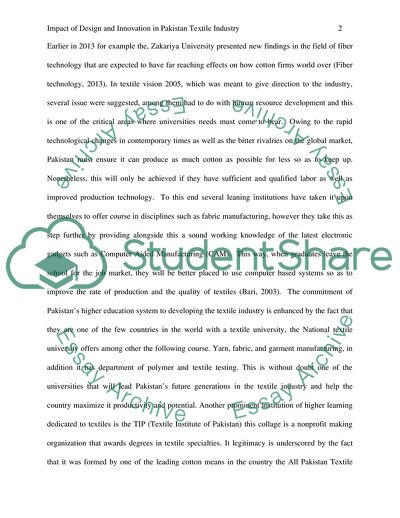Cite this document
(Impact of Design and Innovation in Pakistan Textile Industry Term Paper Example | Topics and Well Written Essays - 1250 words, n.d.)
Impact of Design and Innovation in Pakistan Textile Industry Term Paper Example | Topics and Well Written Essays - 1250 words. https://studentshare.org/design-technology/1807517-impact-of-design-and-innovation-in-pakistan-textile-industry
Impact of Design and Innovation in Pakistan Textile Industry Term Paper Example | Topics and Well Written Essays - 1250 words. https://studentshare.org/design-technology/1807517-impact-of-design-and-innovation-in-pakistan-textile-industry
(Impact of Design and Innovation in Pakistan Textile Industry Term Paper Example | Topics and Well Written Essays - 1250 Words)
Impact of Design and Innovation in Pakistan Textile Industry Term Paper Example | Topics and Well Written Essays - 1250 Words. https://studentshare.org/design-technology/1807517-impact-of-design-and-innovation-in-pakistan-textile-industry.
Impact of Design and Innovation in Pakistan Textile Industry Term Paper Example | Topics and Well Written Essays - 1250 Words. https://studentshare.org/design-technology/1807517-impact-of-design-and-innovation-in-pakistan-textile-industry.
“Impact of Design and Innovation in Pakistan Textile Industry Term Paper Example | Topics and Well Written Essays - 1250 Words”. https://studentshare.org/design-technology/1807517-impact-of-design-and-innovation-in-pakistan-textile-industry.


